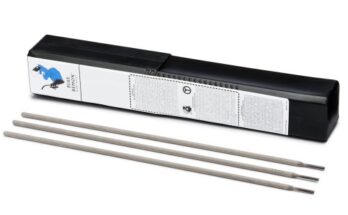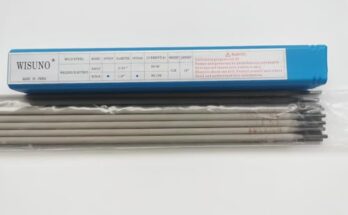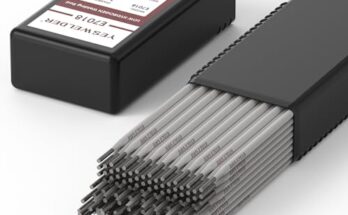Need a smoother welding experience? Let’s explore easy welding rods and discover how to make your welding projects simpler and more enjoyable. This guide will cover different rod types, their applications, and techniques for beginners and experienced welders alike.
Welding rods, also known as electrodes, are metal
sticks coated with flux. This flux is crucial; it cleans the weld area, stabilizes the arc, and protects the molten metal from atmospheric contamination. Without the flux, the weld would be brittle and prone to cracking. Imagine trying to build a sandcastle on a windy beach without any protection – the sand would blow away! Similarly, without flux, the molten metal would oxidize and ruin your weld. The core of the rod is the filler metal, which becomes part of the weld joint, joining the base metals together. The type of filler metal determines the weld’s strength, ductility, and other properties. Choosing the right rod is therefore paramount to a successful weld. For beginners, focusing on a few versatile rod types will simplify the process.
Different Types of Easy Welding Rods
Several factors make a welding rod “easy.” One key aspect is the ease of arc starting and maintaining a stable arc, preventing sticking or excessive spatter. Another is the ease of achieving a smooth, consistent weld bead. For beginners, 6011 and 6013 rods are generally considered the easiest to work with. 6011 rods excel in all positions (even overhead welding!), due to their deep penetration and self-shielding properties. This means they need less precise control of the arc compared to others. 6013 rods, on the other hand, are excellent for thin materials and require a slightly more delicate touch but are still easier than many others for beginners. They are relatively easy to start and produce a smooth, aesthetically pleasing weld. They are good for beginners working with thin sheet metal. Both are available in numerous diameters, making them adaptable for various projects. Choosing between 6011 and 6013 often depends on the material being welded and the desired weld quality.
Choosing the Right Rod for Your Project
Selecting the appropriate welding rod for your project is essential for a successful outcome. The choice depends on several factors, including the base metal’s type and thickness, the desired weld properties, and your skill level. A quick guide to selecting easy welding rods for common projects might be helpful. For instance: repairing a rusty gate might benefit from the deep penetration of a 6011, while welding thin sheet metal would be better served . For advanced projects or specialized metals, other easy-to-use rods might include low-hydrogen rods for applications requiring high strength.
Understanding Welding Techniques for Easy Welding Rods
Proper Arc Starting Techniques
Starting the welding arc correctly is crucial, especially for beginners. A rough start can lead to a poor weld, excessive spatter, or a stuck electrode. A common method is the “scratch start.” This involves lightly dragging the rod across the base metal to initiate the arc. The key is to maintain a smooth, controlled motion. Too much pressure will lead to sticking, while too little will prevent arcing. Practice makes perfect! Another helpful tip is to use a slightly longer arc length (the distance between the electrode and the workpiece) to minimize spatter. This might require a little experimentation to find the right balance.
Maintaining a Stable Arc
Maintaining a constant, stable arc is key to producing a smooth, consistent weld bead. The arc length, electrode angle, and travel speed all contribute to arc stability. For easy welding rods like 6011 and 6013, slight variations in these factors are often manageable, allowing beginners to develop a steady hand and good technique. Irregularities in the arc can lead to an uneven bead, undercuts (grooves along the weld), or lack of penetration, affecting the weld’s strength. Consistent practice is vital in learning to maintain a stable arc. It is akin to learning to ride a bike – you initially struggle to maintain balance, but with practice, it becomes second nature. The more familiar you are with the feeling of a stable arc, the easier it will become.
Control of Travel Speed and Electrode Angle
The travel speed, the rate at which you move the electrode along the weld joint, determines the weld bead’s width and penetration. A slower travel speed results in a wider, more heavily penetrated weld. Conversely, a faster travel speed leads to a narrower, less penetrated weld. The electrode angle refers to the electrode’s position relative to the base material. Generally, a slight downward angle (around 15-20 degrees) is recommended, although optimal angle and speed can vary depending on the type of rod used and the welding position. Practice will teach you the feel for the ideal combination of angle and speed for a perfect weld bead.
Factors Influencing the Ease of Welding
The Role of Flux Coating
The flux coating on the welding rod is a critical element affecting the “easiness” of welding. The flux’s primary role is to shield the molten weld pool from the atmosphere, preventing oxidation and porosity (tiny holes in the weld). A good flux coating also stabilizes the arc, making it easier to maintain a consistent weld. Different types of flux coatings have varying properties and are designed for different applications. Some flux coatings are formulated for enhanced arc stability, reduced spatter, or easier slag removal.
Electrode Diameter and Material
The diameter of the welding rod affects the ease of use and the weld penetration. Thicker rods generally deposit more weld metal, leading to deeper penetration, but they can be harder to manipulate. Thinner rods, while easier to handle, may lead to shallower penetration. The material of the electrode itself is critical in determining the strength and properties of the weld. The choice of material usually aligns with the base metal you’re welding; thus, selecting a suitable rod requires understanding the material composition of your project.
Impact of Power Source and Settings
The welding machine’s power source and settings significantly impact the welding process’s ease. Incorrect settings can lead to unstable arcs, excessive spatter, or poor weld penetration. An appropriate power source should provide a stable and consistent current, enhancing the welding experience. For beginners, using a simple, well-regulated machine is recommended. Experimenting with different settings is crucial to finding the optimal combination for the chosen electrode and metal thickness. Adjustments will be necessary when changing rod diameter and materials.
Choosing the Right Welding Equipment
Selecting an Appropriate Welding Machine
Choosing the right welding machine is fundamental for easy welding. Beginner welders should opt for a straightforward, user-friendly machine, such as a basic stick welder (also known as a SMAW welder). These machines are generally easy to use and maintain and offer precise current control, essential for achieving optimal weld parameters. Advanced features are unnecessary at the beginning stages of learning to weld. A reliable, well-built stick welder will provide a good foundation for your welding journey.
Essential Safety Gear
Safety is paramount when welding. Appropriate safety gear, including a welding helmet with a suitable shade lens, welding gloves, and protective clothing, is mandatory. The helmet protects your eyes from the intense arc light, preventing eye damage. Welding gloves protect your hands from heat and sparks. Protective clothing shields your body from spatter and heat radiation. Ignoring safety precautions can lead to severe injuries, such as burns and eye damage. It is recommended to review safety guidelines from reputable organizations.
Other Necessary Tools and Supplies
Beyond the welding machine and safety gear, several other tools and supplies are needed for successful welding. A wire brush is essential for cleaning the base metal before welding. A chipping hammer removes slag (solidified flux) from the weld. A welding clamp helps hold the workpieces securely in place. Having these tools readily available makes the entire process easier and more efficient. Adequate ventilation is also recommended to mitigate exposure to fumes.
Troubleshooting Common Welding Issues
Dealing with Excessive Spatter
Excessive spatter is a common problem, especially for beginners. It’s typically caused by factors like an excessively long arc, incorrect welding current, or improper electrode angle. Adjusting the arc length, lowering the welding current, or refining electrode angle is often effective. A cleaner weld area, free from contaminants and moisture, can also minimize spatter. Practicing good technique helps avoid these issues and improves consistency.
Tackling Arc Sticking
Arc sticking occurs when the electrode fuses to the base metal, interrupting the welding process. This is often caused by too much pressure on the electrode, an excessively short arc, or a dirty weld area. Reducing pressure, increasing the arc length, cleaning the metal, or adjusting the welding current can help resolve this. Remember to frequently remove the solidified flux from the previous welds to prevent build-up.
Resolving Uneven Weld Beads
Uneven weld beads can be attributed to inconsistent travel speed, improper electrode angle, or insufficient current. Maintaining a uniform travel speed, adjusting the angle, and fine-tuning the current are crucial for achieving a smooth, consistent weld. Practice is key to achieving this consistency. Observe the weld bead to see how your technique is impacting the final outcome.
Improving Your Welding Skills
Practice and Patience
Consistent practice is the cornerstone of improving welding skills. Start with simple projects to build a solid foundation before tackling more complex tasks. Patience is equally essential; mastering welding takes time and effort. Don’t get discouraged by initial difficulties; focus on improving your technique gradually. Regular practice, even short sessions, yields significant improvement over time.
Online Resources and Tutorials
Many online resources, including videos, tutorials, and forums, offer valuable insights into welding techniques and troubleshooting. These resources can supplement your practical experience and broaden your knowledge. Explore these resources, but remember that practical experience is invaluable. Online learning complements, but doesn’t replace, hands-on training.
Seeking Expert Guidance
Seeking guidance from experienced welders or taking a formal welding course can greatly accelerate your learning. An experienced welder can provide personalized feedback and correct your technique, accelerating your progress. A structured course teaches you fundamental principles and advanced techniques. Consider local community colleges or vocational schools that offer welding programs.
Easy Welding Rods for Specific Applications
Welding Steel
For welding steel, 6011 and 6013 are excellent choices for beginners due to their ease of use and versatility. However, for thicker steel or applications requiring superior strength, other rods like 7018 might be preferred, although they require more skill. Remember to select a rod with a filler metal that is compatible with the base steel.
Welding Aluminum
Aluminum requires specialized welding rods and techniques due to its unique properties. Aluminum welding rods are typically made of aluminum alloys and require higher skill levels than welding steel. While easy-to-use aluminum welding rods exist, they still require more practice and precision than 6011 or 6013 for steel.
Welding Stainless Steel
Welding stainless steel demands specialized rods to preserve its corrosion resistance. Stainless steel welding rods often require more precise control of heat input and arc length to avoid discoloration or compromising the material’s properties. Though some stainless-steel welding rods are simpler to use than others, they are generally more challenging for beginners.
Frequently Asked Questions
What are easy welding rods best for?
Easy welding rods, such as 6011 and 6013, are ideal for beginners and straightforward projects. 6011 excels in all positions and is great for thicker materials, while 6013 is perfect for thin sheet metal and offers a smoother weld. They’re suitable for repairs, hobby projects, and light fabrication. Learn more about specific applications for these rods.
What is the difference between 6011 and 6013 welding rods?
6011 is a general-purpose, all-position electrode that’s known for its deep penetration and easy arc starting. It’s highly forgiving and works well in various conditions. 6013 is also a versatile electrode that’s easier to use for beginners on thinner materials and produces a smoother, more aesthetically pleasing weld bead. Both rods are considered user-friendly, but 6013 demands more consistent arc length management.
What safety precautions should I take when using easy welding rods?
Always wear appropriate safety gear, including a welding helmet with a suitable shade lens, welding gloves, and protective clothing. Ensure adequate ventilation to avoid inhaling welding fumes. Keep flammable materials away from the welding area. Learn more about welding safety guidelines from reliable sources such as OSHA.
How do I choose the right amperage for easy welding rods?
The recommended amperage for each rod is typically printed on the rod packaging. Start at the lower end of the recommended range and gradually increase if needed. Too low amperage leads to difficult arc starting, poor penetration, and excessive spatter. Too high amperage results in excessive spatter and burn-through. Always use the amperage specified by the manufacturer of the welding rod.
Can I use easy welding rods on all types of metal?
Easy welding rods, like 6011 and 6013, are primarily designed for mild steel. While they might work on some other metals with limited success, it’s best to use specialized rods designed for different materials like aluminum or stainless steel. Using the wrong rod can compromise the weld’s quality and strength.
What should I do if my welding rod keeps sticking?
If your welding rod keeps sticking, ensure the weld area is clean and dry, reduce the amperage slightly, increase the arc length, and reduce pressure on the electrode. Overheating can also cause sticking; ensure you are not welding for extended periods without allowing the metal to cool slightly.
Where can I find more information about different types of welding rods?
You can find comprehensive information on welding rods from manufacturers’ websites, technical manuals, welding supply stores, and online welding forums. Many reputable websites offer detailed specifications, applications, and safety information about different welding rod types.
Final Thoughts
Mastering the art of welding, even with easy welding rods, takes time and dedication. However, with the right techniques, proper equipment, and a patient approach, anyone can achieve clean, strong, and reliable welds. Remember that practice and consistent effort are key. Start with simple projects, gradually increasing the complexity as your skills improve. Don’t be afraid to explore additional resources and seek expert guidance if needed. By following these tips and maintaining a safe approach, you’ll soon be enjoying the satisfaction of crafting your projects with confidence. Now, go forth and weld!


